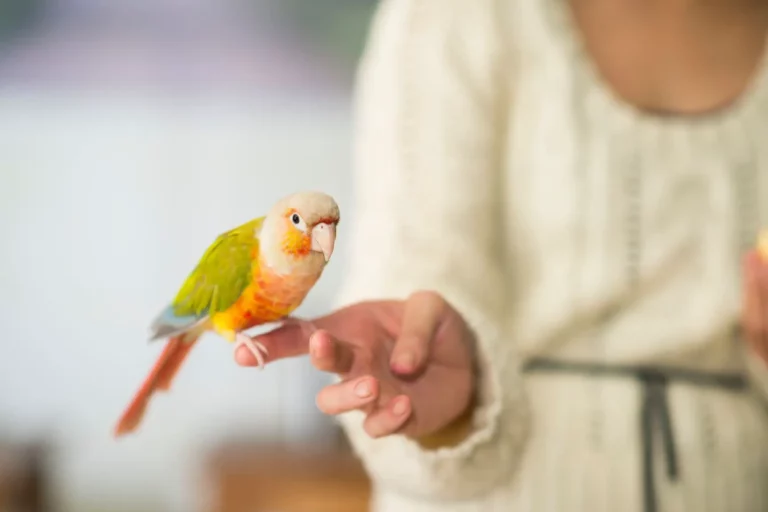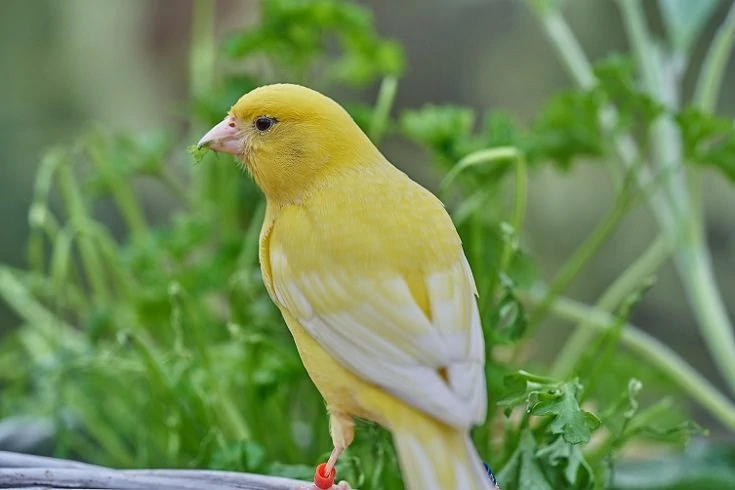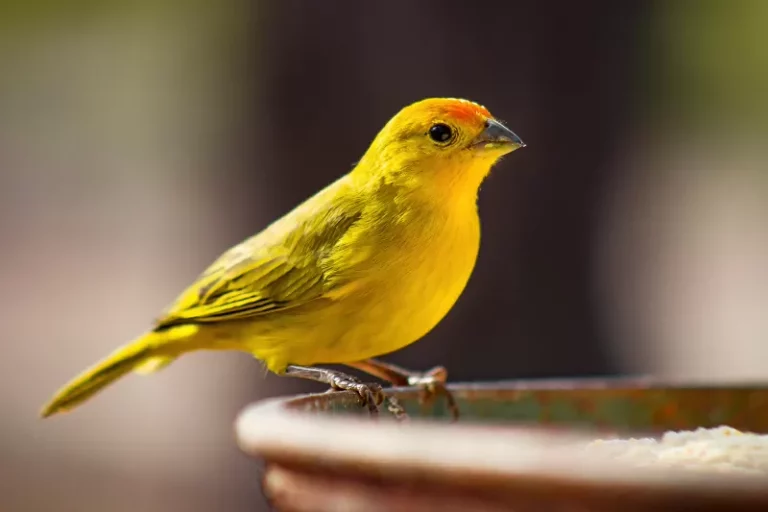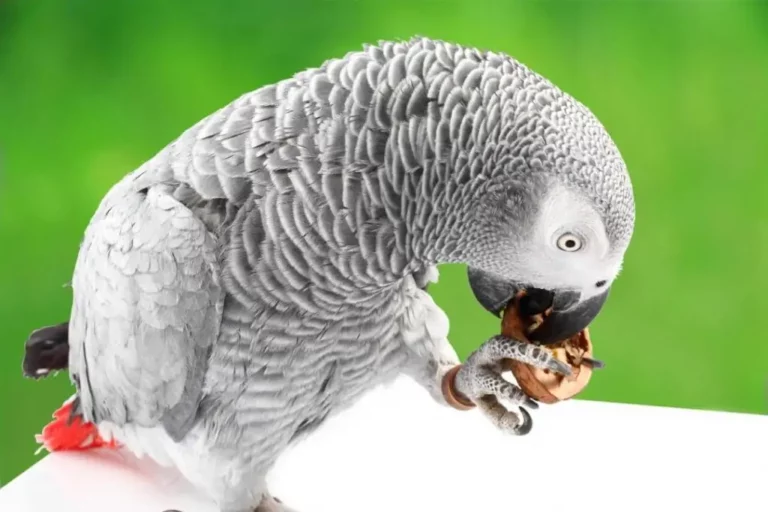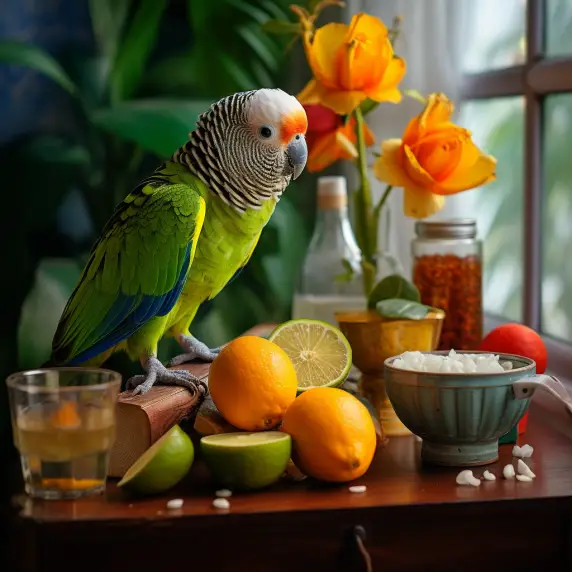Lovebird vs Parrotlet: Which One is Right for You? 🦜💕
When it comes to choosing a small pet bird, the decision between a lovebird and a parrotlet can be challenging. In this blog post, we will compare and contrast these adorable avian species to help you make the best choice for your family and lifestyle. Let’s dive in!
Key Takeaways
Lovebirds and parrotlets are both small, colorful, and intelligent birds.
Each species has unique traits, such as lovebirds’ social nature and parrotlets’ independence.
Proper care, diet, and housing are essential for both birds.
The choice between lovebird and parrotlet depends on your personal preferences and lifestyle.
The Key Differences Between Lovebirds and Parrotlets
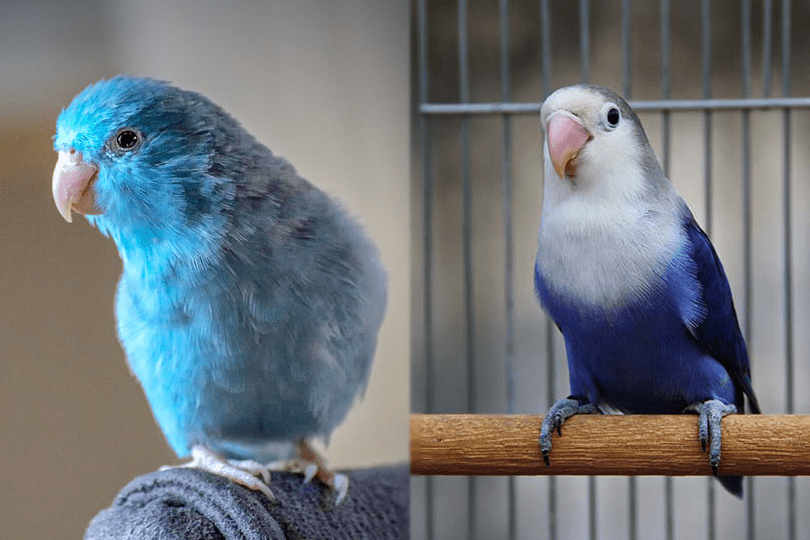
When deciding between a lovebird and a parrotlet, it’s essential to understand the key differences between these two small parrot species. In this section, we will explore their origins, physical appearances, lifespans, and unique characteristics to help you determine which bird is the right fit for you.
Origins: Where Lovebirds and Parrotlets Come From
- Lovebirds: These small, affectionate parrots originate from Africa and Madagascar. They inhabit a variety of environments, including forests, savannas, and grasslands.
- Parrotlets: Parrotlets are native to Central and South America, living primarily in tropical and subtropical regions. They can be found in forests, woodlands, and even shrubby areas.
Size: Comparing the Physical Dimensions of Lovebirds and Parrotlets
- Lovebirds: Lovebirds are slightly larger than parrotlets, measuring between 5-7 inches in length. They have a stocky build and a short, blunt tail.
- Parrotlets: Parrotlets are smaller, usually reaching only 4-5 inches in length. They have a more slender body and a longer, pointed tail.
Lifespan: How Long do Lovebirds and Parrotlets Live?
- Lovebirds: With proper care, lovebirds can live for 10-15 years, making them a long-term commitment for potential owners.
- Parrotlets: Parrotlets generally have a longer lifespan than lovebirds, living between 15-20 years. This also means a long-term commitment for those considering adopting a parrotlet.
Unique Characteristics: What Sets Lovebirds and Parrotlets Apart?
- Lovebirds: Lovebirds are known for their social and affectionate nature. They often form strong bonds with their human caregivers and may even require a fellow lovebird companion to prevent loneliness.
- Parrotlets: Parrotlets have a more independent personality compared to lovebirds. They are often described as feisty and territorial, and while they can bond with humans, they may also be content playing on their own.
Understanding these key differences between lovebirds and parrotlets can help you make an informed decision about which bird species is the best fit for your lifestyle and preferences.
Pros and Cons of Lovebirds and Parrotlets as Pets
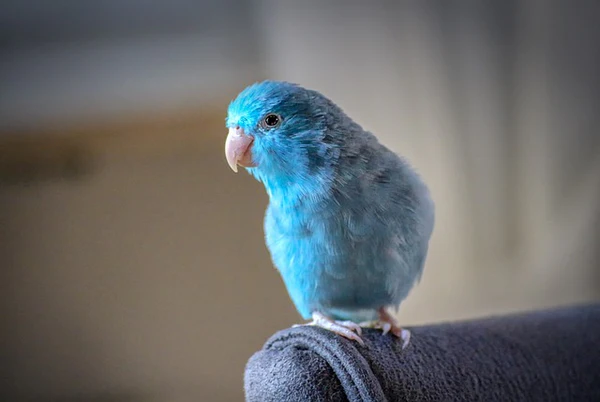
Now that we’ve explored the key differences between lovebirds and parrotlets, let’s take a look at the advantages and disadvantages of owning each bird species. This will give you a clearer picture of what to expect when you bring one of these feathered companions into your home.
Pros of Lovebirds as Pets
- Affectionate and social: Lovebirds are known for their loving nature and strong bonds with their owners. They enjoy cuddling and spending time with their human companions, making them excellent pets for those seeking an interactive bird.
- Adaptable: Lovebirds can adapt well to various environments, making them suitable for different types of households and climates.
- Colorful and attractive: With their vibrant colors and playful personalities, lovebirds can make a visually appealing addition to your home.
Cons of Lovebirds as Pets
- Require companionship: Lovebirds need social interaction and may become lonely or depressed if left alone for extended periods. This can be challenging for owners who don’t have the time or desire to provide constant attention.
- Noise: Lovebirds can be quite vocal, which may be an issue for those living in apartments or close quarters with neighbors.
- Potential aggression: While lovebirds are generally friendly, they can become aggressive if they feel threatened or if their social needs are not met.
Pros of Parrotlets as Pets
- Independent: Parrotlets are more independent than lovebirds, making them a suitable choice for owners who may not have as much time to devote to their pet.
- Intelligent and trainable: Parrotlets are highly intelligent and can be trained to perform tricks and even learn a limited vocabulary.
- Space-efficient: Due to their small size, parrotlets require less space than larger parrot species, making them ideal for those with limited room for a birdcage.
Cons of Parrotlets as Pets
- Territorial: Parrotlets can be territorial and may not get along well with other birds or pets in the household.
- Nippiness: Parrotlets can be nippy, especially if they are not properly socialized or if they feel threatened.
- Noise: While parrotlets may not be as loud as lovebirds, they can still produce high-pitched sounds that could be bothersome to some owners.
Weighing the pros and cons of each species will help you determine whether a lovebird or parrotlet is the best fit for your home and lifestyle. Consider factors such as the amount of time you can devote to your pet, noise tolerance, and compatibility with other household pets before making a decision.
Caring for Lovebirds and Parrotlets: Key Considerations
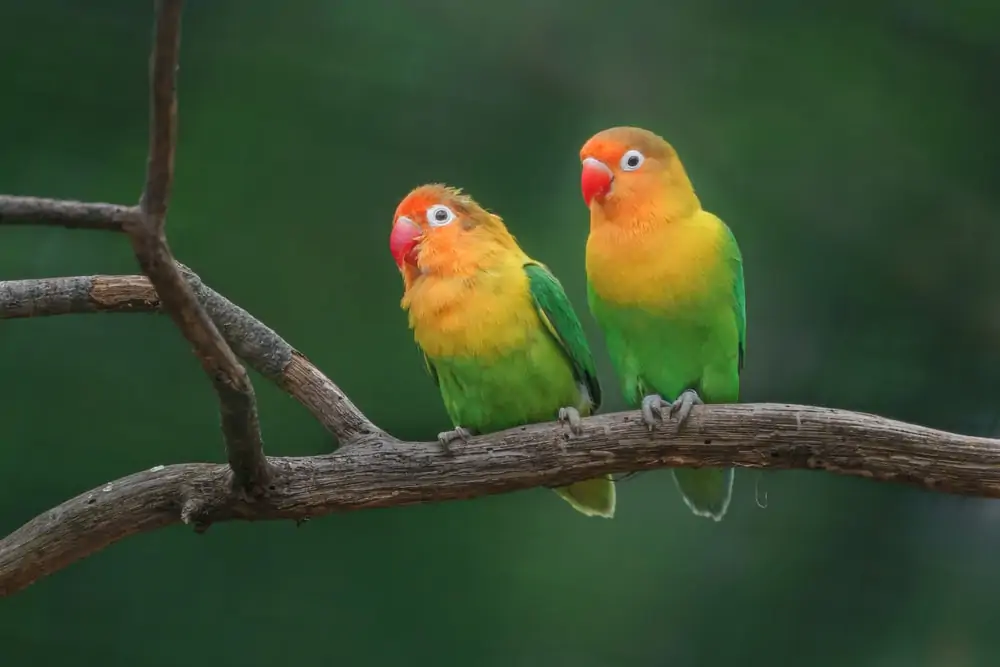
While lovebirds and parrotlets share some similarities, they also have unique needs when it comes to proper care. In this section, we will discuss essential factors to consider for the well-being of your feathered friend, including housing, environment, diet, and exercise.
Housing and Environment
Lovebird Housing Requirements
- Cage size: Lovebirds require a spacious cage to accommodate their active nature. A minimum cage size of 24 x 24 x 24 inches is recommended, with horizontal bars for climbing and perching.
- Perches: Provide a variety of perches with different diameters and textures to promote foot health and prevent boredom.
- Toys and enrichment: Lovebirds enjoy playing and exploring. Provide toys, such as swings, ladders, and foraging toys, to keep them mentally stimulated.
Parrotlet Housing Requirements
- Cage size: Parrotlets also need a spacious cage for their active lifestyles. A minimum cage size of 18 x 18 x 24 inches is suggested, with horizontal bars for climbing.
- Perches: Like lovebirds, parrotlets need a variety of perches for optimal foot health and mental stimulation.
- Toys and enrichment: Parrotlets thrive with mental challenges. Offer a range of toys, including puzzle toys and foraging toys, to keep them entertained.
Diet and Nutrition
Lovebird Diet
- Pellets: A high-quality pellet mix should make up the majority of your lovebird’s diet.
- Fresh produce: Supplement your lovebird’s diet with fresh fruits, vegetables, and sprouted seeds.
- Treats: Offer occasional treats like millet sprays, but avoid giving too many, as they can lead to obesity.
Parrotlet Diet
- Pellets: A balanced pellet mix is also crucial for parrotlets, providing essential nutrients and vitamins.
- Fresh produce: Complement your parrotlet’s diet with fresh fruits, vegetables, and grains for variety.
- Treats: Treats should be offered sparingly, as overindulging can lead to health problems.
Exercise and Socialization
Lovebird Exercise and Socialization
- Out-of-cage time: Lovebirds need daily exercise to maintain physical and mental health. Allow your lovebird to spend time outside of its cage under supervision.
- Social interaction: As social creatures, lovebirds require regular interaction with their human caregivers or other lovebirds to prevent loneliness and depression.
Parrotlet Exercise and Socialization
- Out-of-cage time: Like lovebirds, parrotlets benefit from daily exercise and playtime outside their cage. Supervise these sessions to ensure safety.
- Social interaction: Although parrotlets are more independent than lovebirds, they still need regular socialization to keep them happy and well-adjusted.
Proper care, housing, and nutrition are essential for both lovebirds and parrotlets. By providing a suitable environment and meeting their unique needs, you can ensure a happy and healthy life for your feathered companion.
Choosing the Right Bird for You: Lovebird or Parrotlet?
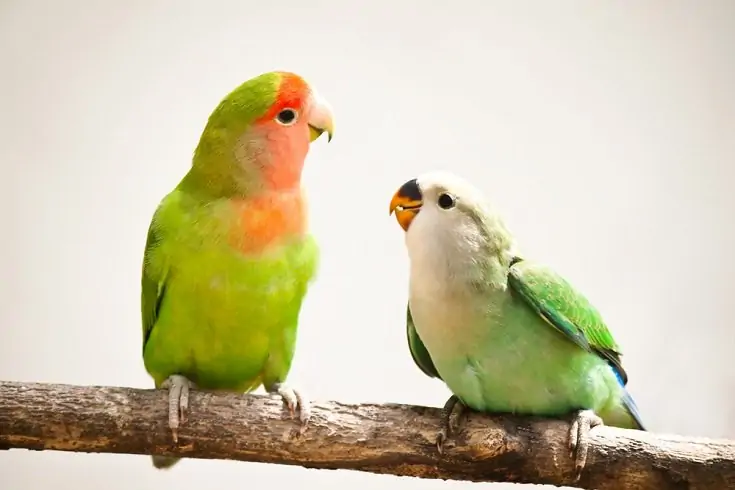
Now that we’ve covered the key differences between lovebirds and parrotlets, their pros and cons, and their care requirements, it’s time to decide which bird is the best fit for your lifestyle and preferences. In this section, we will offer some guidance to help you make an informed choice.
Consider Your Lifestyle and Preferences
Ask yourself the following questions to better understand your needs and preferences:
- Time commitment: How much time can you dedicate to interacting with and caring for your bird? Lovebirds require more attention and social interaction than parrotlets.
- Noise tolerance: Can you tolerate the noise levels of a vocal bird? Both lovebirds and parrotlets can be loud, but lovebirds may be more vocal in general.
- Desired level of independence: Do you prefer a bird that is more independent or one that craves constant companionship? Parrotlets are more independent, while lovebirds seek more social interaction.
- Space requirements: How much space can you provide for your bird’s cage and out-of-cage activities? Both species require ample room for their cages, but parrotlets have slightly smaller space requirements.
Assess Compatibility with Other Pets and Family Members
Consider the compatibility of a lovebird or parrotlet with other pets and family members in your household:
- Existing pets: Parrotlets can be territorial and may not coexist well with other birds or pets. Lovebirds are more social but can also become aggressive if they feel threatened.
- Children: Both lovebirds and parrotlets can be suitable for families with children if properly socialized and supervised. Teach children to respect the bird’s boundaries and handle them gently.
Seek Expert Advice and Visit Local Breeders or Rescues
Before making a final decision, consult with avian experts, such as veterinarians or experienced bird owners. Additionally, visit local breeders or bird rescues to observe lovebirds and parrotlets in person.
Interacting with the birds can give you a better understanding of their unique personalities and help you decide which species aligns best with your preferences.
Frequently Asked Questions
Can lovebirds and parrotlets live together in the same cage?
It is generally not recommended to house lovebirds and parrotlets together, as they may not get along and could injure one another.
How much time do I need to spend with my lovebird or parrotlet each day?
Lovebirds require more daily interaction than parrotlets due to their social nature. It’s essential to spend at least an hour a day with your lovebird, while parrotlets may need less hands-on attention but still benefit from regular socialization.
Are lovebirds or parrotlets better talkers?
Both species can mimic sounds and learn a limited vocabulary, but parrotlets generally have a greater capacity for speech. However, neither species is known for their talking abilities like larger parrot species.
Are lovebirds and parrotlets suitable for families with children?
Both lovebirds and parrotlets can be suitable for families with children if properly socialized and supervised. Lovebirds may be more forgiving of handling, while parrotlets can be nippy if not accustomed to handling or if they feel threatened. Teach children to respect the bird’s boundaries and handle them gently.
Conclusion: Lovebird vs Parrotlet
In the end, the decision between a lovebird and a parrotlet comes down to personal preference and lifestyle. Lovebirds are ideal for individuals who enjoy a strong bond and frequent interaction with their pets, while parrotlets suit those who prefer a more independent companion.
Regardless of your choice, both lovebirds and parrotlets can bring joy, color, and companionship into your home.
Additional resources:

